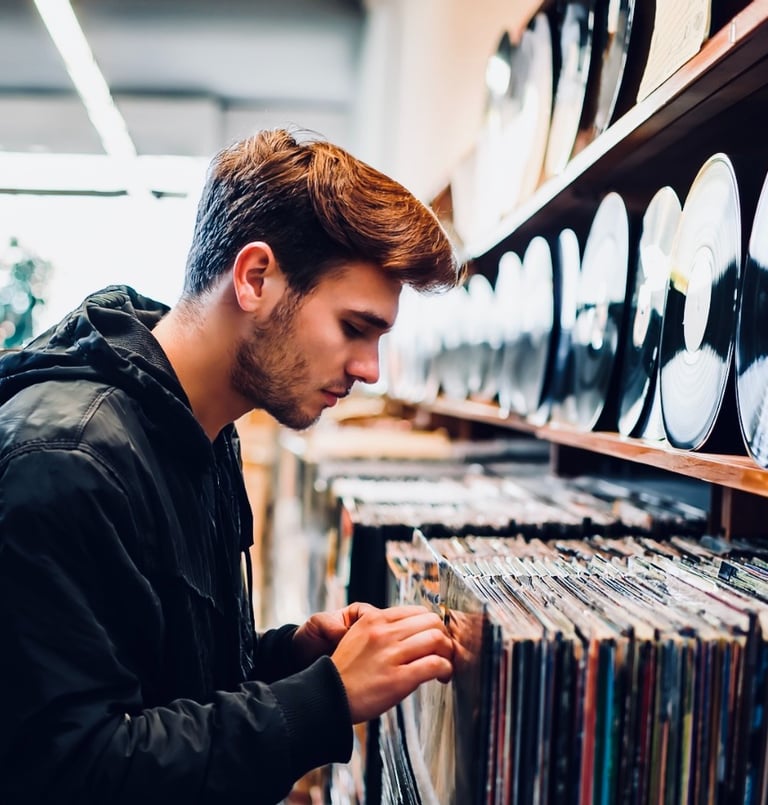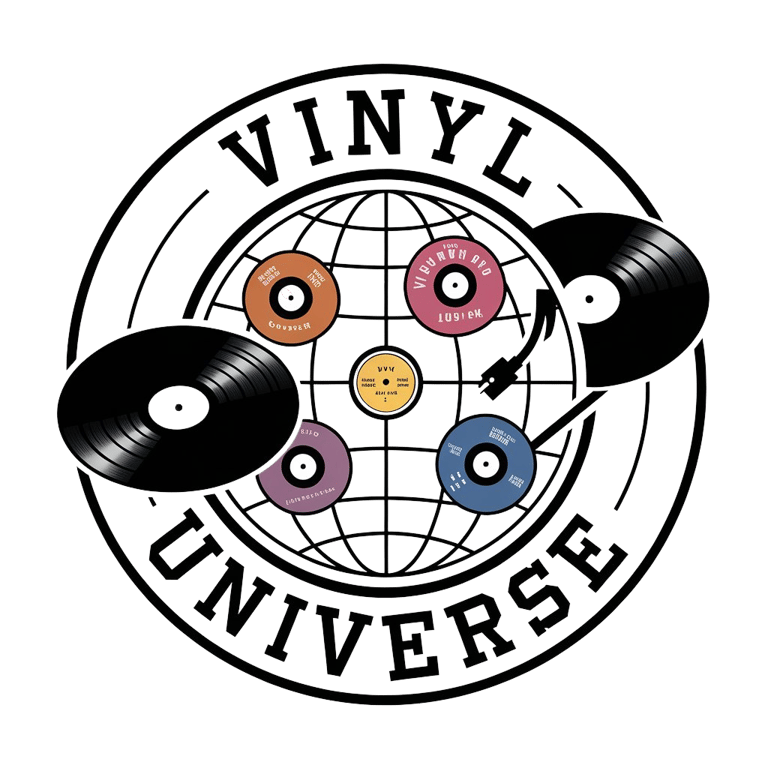Grab your vinyl at discounted prices!
Soul On Wax
Why is Gen Z Is Obsessed with Funk and Soul Vinyl?
Illustrious
7/14/20253 min read


Soul on Wax: Why Gen Z Is Obsessed with Funk and Soul Vinyl
The needle drops. James Brown's "Get Up (I Feel Like Being a) Sex Machine" explodes from the speakers. The kid behind the turntable? Twenty-two years old, wearing beat-up Jordans and a thrifted Parliament-Funkadelic tee.
Here's what's wild—young collectors aren't just buying vinyl for Instagram photos. They're hunting original Stax pressings like treasure hunters. They know the difference between a '73 and '74 pressing of "What's Going On."
The Crate Diggers
Walk into any record store on Saturday. You'll see them—Gen Z kids flipping through dusty crates with laser focus. They don't want "Best of Motown" on Spotify. They want that original blue Tamla label.
Maya, nineteen, from Portland, spent three months tracking down Betty Davis's self-titled album. "When I found it in Seattle, I called my mom crying," she tells me. "Betty Davis on vinyl hits different than any digital file ever could."
She's not wrong. There's something about how Sly Stone's bass lines feel when they're pressed into grooves. Curtis Mayfield's falsetto floats above the surface noise. Digital flattens these records. Vinyl lets them breathe.
Beyond the Photo Op
Sure, some buy vinyl for the aesthetic. But dig deeper—these collectors are rediscovering forgotten gems. Take Isaac Hayes's "Hot Buttered Soul." Four tracks, eighteen minutes per side. When's the last time anyone under thirty sat through an eighteen-minute song?
"My friends think I'm weird because I'll put on a record and just... listen," says Carlos from Chicago. "No phone, no multitasking. Just me and whatever Stevie Wonder was thinking in 1972."
The Hunt Gets Serious
Young collectors aren't shopping like their parents did. They're researching pressing plants, studying matrix numbers. They know early Motown records pressed at ARP sound warmer than later represses. They can tell you why original Blue Note records cost a fortune. (Hint: Rudy Van Gelder's engineering magic.)
This isn't casual interest. This is full obsession mode.
Happy Accidents
Digital algorithms think they know what you want next. Vinyl doesn't care about your listening history. Buy a used record, you might discover genius on the B-side. Maybe a nine-minute Funkadelic jam you'd never heard. Maybe an obscure Al Green track that never hit streaming.
Jackson from Nashville found The Meters' "Look-Ka Py Py" at a garage sale. "I bought it because I recognized the name. When I played it at home, I finally understood what people mean by 'the pocket.' You can't program that rhythm. It has to be felt."
The imperfections matter too. That slight warp making drums wobble. Surface noise like rain. These aren't flaws—they're time signatures.
Why This, Why Now?
Maybe everything else feels disposable. Music streams past at warp speed. Albums get lost in playlists. But vinyl demands commitment. You can't skip easily. You flip sides. You stay present.
Or maybe it's simpler. Young people are tired of committee-designed music. They want Ann Peebles crying through "I Can't Stand the Rain." They want early Funkadelic's controlled chaos where anything could happen.
They're not collecting records—they're collecting moments. The anticipation before the needle drops. Cleaning the stylus. Album art at actual size instead of thumbnail.
Full Circle
This isn't nostalgia. These kids weren't there the first time. This is pure discovery. They're hearing "What's Going On" how it was meant to be heard—complete, with pauses and segues intact.
They get something we forgot: some music needs space to unfold. Some songs need analog warmth to make sense. Some grooves can only be felt when they're literally grooves.
The needle lifts. The record stops. But the music lingers in ways streaming never quite manages. That's what these young collectors are chasing—and finding it, one crate dig at a time.
The Vinyl Universe
Discover rare and new vinyl LPs today. Enhance your vinyl collection with our curated selection of long-playing records, vinyl reissues, and accessories, including high-quality phono cartridges.
The Vinyl Universe
support@vinyl-universe.com
+1-909-404-5161
© 2025. All rights reserved.
